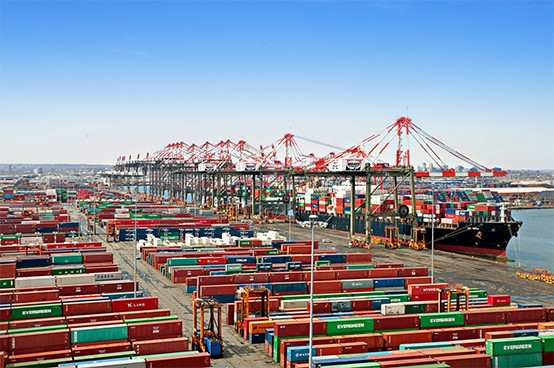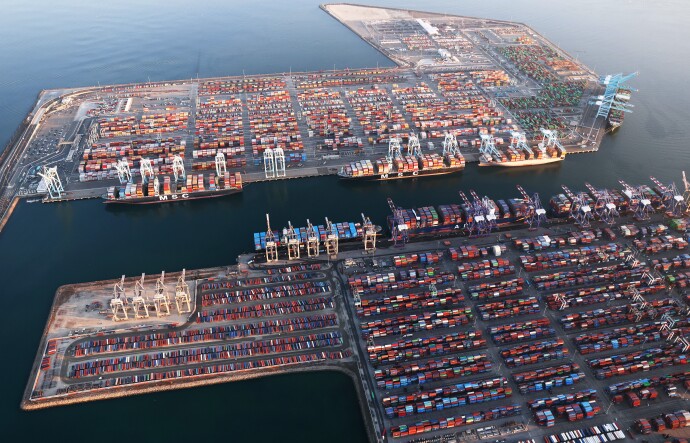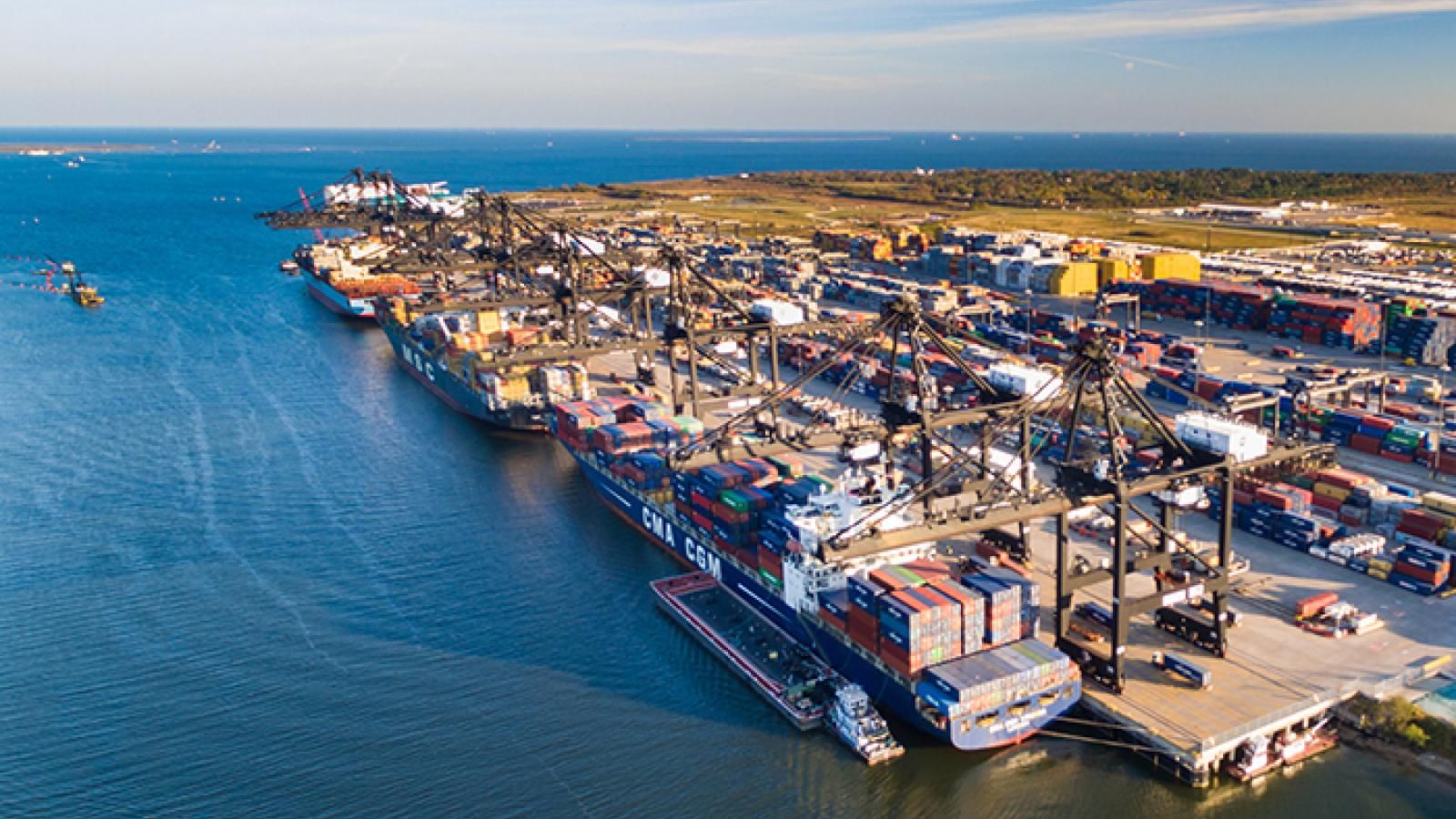A trade lane (or trade route) refers to a specific pathway along which goods are transported between two or more locations, typically across international borders. Trade lanes are established based on the flow of goods and the economic relationships between countries or regions. They encompass both maritime and air routes and play a crucial role in global supply chains by facilitating the movement of goods and fostering international trade.
Transit time refers to the duration it takes for goods or shipments to travel from their origin to their destination. It is a crucial metric in supply chain and logistics management, as it directly impacts delivery schedules, inventory levels, and customer satisfaction. Transit time encompasses the entire journey of a shipment, including transportation, handling, and processing at various checkpoints along the route.
Transloading refers to the process of transferring goods or cargo from one mode of transportation to another, typically from one type of truck or railcar to another, or from rail to truck and vice versa. This logistical practice is often employed to optimize transportation routes, reduce costs, and improve overall efficiency in supply chain operations.
A Transportation Management System (TMS) is a specialized software solution designed to streamline and optimize transportation and logistics operations within supply chains. It provides functionalities to effectively manage and control the movement of goods from origin to destination.
Transportation lead time refers to the duration it takes for goods to be transported from the point of origin to the final destination. It encompasses the time required for transportation activities, including loading, transit, and unloading, across various modes of transport such as road, rail, air, or sea.
A transshipment is the process of transferring goods from one transportation vehicle or vessel to another during their journey from origin to destination. It typically occurs at intermediary points along the supply chain route, where cargo is transferred between different modes of transportation, carriers or vessels.
Twenty-foot Equivalent Unit (TEU) is a standard unit of measurement used in the shipping industry to quantify the cargo-carrying capacity of container vessels. It represents the volume of a standard twenty-foot-long shipping container.
An Ultra Large Container Vessel (ULCV) is a massive container ship used on major trade routes, capable of carrying over 14,000 TEUs.
Vendor Managed Inventory (VMI) is a supply chain management strategy where the supplier or vendor takes responsibility for managing the inventory levels of their products at the customer's or retailer's location. In this arrangement, the vendor monitors the inventory levels based on agreed-upon criteria such as sales data or inventory levels, and initiates replenishment as needed.
Verified Gross Mass (VGM) is a term used in the shipping industry to refer to the total weight of a packed container, including its contents and packaging materials. It is a crucial requirement mandated by the International Maritime Organization (IMO) under the Safety of Life at Sea (SOLAS) convention to enhance safety in maritime transportation.
A floating structure with its own mode of propulsion designed for the transport of cargo and/or passengers. In the Industry Blueprint 1.0 "Vessel" is used synonymously with "Container vessel", hence a vessel with the primary function of transporting containers.
A vessel sharing agreement (VSA) is a cooperative arrangement between shipping companies that allows them to share space and resources on vessels for specific routes.
Vessel bunching refers to the situation where multiple vessels arrive at a port simultaneously or within a short period, leading to congestion and delays. This clustering of vessels can overwhelm port facilities, causing extended wait times for berthing, loading, and unloading operations.
A vessel call sign is a unique identifier assigned to a ship for radio communication purposes. It is used to distinguish the vessel from others in maritime communication systems, including VHF radios and satellite communications.
A vessel omission (sometimes called a port omission) occurs when a scheduled vessel does not call at a planned port during its voyage. This disruption means that the vessel skips the port entirely, which can impact the transportation and delivery schedules of goods.
In cargo shipping, vessel rotation is the planned sequence of port calls that a shipping vessel follows on its route to optimize cargo loading and unloading operations.
The timetable of departure and arrival times for each port call on the rotation of the vessel in question.
A journey by sea from one port or country to another one or, in case of a round trip, to the same port.
Warehouse utilization is a logistics metric that refers to the effective use of available warehouse space for storing goods and inventory.
Order for specific transportation work carried out by a third party provider on behalf of the issuing party.
Logistics yard management refers to the process of overseeing and controlling the movement of trucks, trailers, containers, and other vehicles within a yard or distribution center. This includes tasks such as scheduling, tracking, and coordinating the arrival, departure, and storage of these vehicles.

How Long Does It Take to Ship Cargo from Mundra to New York?
Shipping cargo from Mundra to New York takes 36.7 days on average¹. Analysis of 1,247 shipments shows this average includes two distinct routing methods: direct routing averaging 29.2 days and transshipment routing averaging 41.8 days¹.
The route demonstrates significant routing diversity with most shipments using transshipment services through major hubs. Performance clusters around 28-30 days (19.2%) for optimized direct services and 42-45 days (23.4%) for standard transshipment routing¹. Understanding these routing patterns is essential for effective supply chain planning on this key India-US trade lane.
Direct vs Transshipment Routing Differences
Transit times vary considerably based on routing methodology. Direct routing operates point-to-point from Mundra to New York, representing 42% of shipments and averaging 29.2 days¹. Transshipment routing routes cargo through intermediate hub ports, accounting for 58% of volume and averaging 41.8 days¹.
The routing selection reflects trade lane economics: direct routing offers schedule predictability at premium pricing, while transshipment routing leverages hub consolidation for cost efficiency but requires extended transit windows and accepts greater schedule variability.
Carrier Performance and Routing Types
Major carriers demonstrate distinct operational strategies reflected in their routing choices. MSC operates primarily transshipment routing through European and Middle Eastern hubs, averaging 43.2 days across 298 shipments¹. COSCO provides mixed services with direct routing averaging 25.8 days (187 shipments) and transshipment routing averaging 39.4 days (156 shipments)¹.
Maersk offers comprehensive routing options including premium direct services averaging 24.1 days (142 shipments) and hub-based transshipment services averaging 44.6 days (203 shipments)¹. Hapag-Lloyd focuses on transshipment efficiency, averaging 40.2 days across 267 shipments with limited direct options¹.
OOCL operates predominantly transshipment services through Asian hubs, averaging 38.9 days (231 shipments), while maintaining direct capabilities averaging 31.4 days (89 shipments)¹. This carrier differentiation explains the route's performance distribution patterns.
Distribution of Transit Times
The route exhibits a multi-modal distribution pattern directly correlated with routing strategies. Direct routing creates faster performance clusters at 22-25 days and 28-30 days, while transshipment routing generates longer transit bands from 35-55 days depending on hub selection and connection efficiency.
The 36.7-day average reflects the volume-weighted impact of transshipment dominance (58%) combined with occasional extended routings through multiple hubs. The median of 38.2 days¹ indicates transshipment routing's market influence on this trade lane.
Seasonal Patterns by Routing Method
Direct versus transshipment routing exhibit different seasonal sensitivities tied to hub port performance and weather patterns. Direct routing maintains relatively consistent performance year-round, with monsoon season impacts extending times to 32-35 days during June-September, while winter months achieve optimal 26-29 day performance.
Transshipment routing shows pronounced seasonal variation due to hub dependencies across multiple regions. Winter months (December-February) can extend transshipment times to 48-58 days as European hub ports face capacity constraints and weather delays. Summer months see improved transshipment performance at 38-42 days as global hub operations optimize efficiency.
Peak season impacts (September-November) affect both routing types, with direct routing extending to 31-34 days and transshipment routing reaching 45-52 days due to port congestion and equipment shortages. This seasonal variation influences routing selection as shippers balance cost against schedule reliability.
Planning Considerations by Routing Type
Direct routing planning: Use 28-32 day windows for standard direct routing. Premium express services can achieve 22-26 day performance on optimized sailings. Direct routing provides more predictable arrival patterns with reduced hub-related delays.
Transshipment planning: Allow 40-50 days for standard transshipment routing. Performance varies significantly based on hub selection, connection timing, and seasonal factors. Consider additional buffers for multi-hub routings and peak season operations.
Routing selection: Direct routing commands premium pricing but delivers schedule reliability crucial for time-sensitive cargo. Transshipment routing offers substantial cost savings through hub consolidation but requires extended planning windows and operational flexibility.
Planning Summary
Mundra to New York shipping requires comprehensive understanding of routing methodologies and their performance implications. The 36.7-day annual average¹ provides baseline guidance, but effective planning should incorporate:
- Direct routing: 28-32 day planning window (42% of shipments)
- Transshipment routing: 40-50 day planning window (58% of shipments)
- Carrier selection: Based on routing strategy, hub network, and service reliability
- Seasonal adjustments: Routing-specific allowances for monsoon, peak season, and winter impacts
The route's multi-modal distribution reflects diverse routing approaches rather than the mathematical average, making routing methodology selection a critical planning decision for this major India-US trade corridor.
Data Sources: ¹ Analysis based on Beacon platform data: 1,247 shipments (September 2024 - September 2025) showing 524 direct services (29.2-day average) and 723 transshipment services (41.8-day average)
Current service information available through Beacon





.jpg)